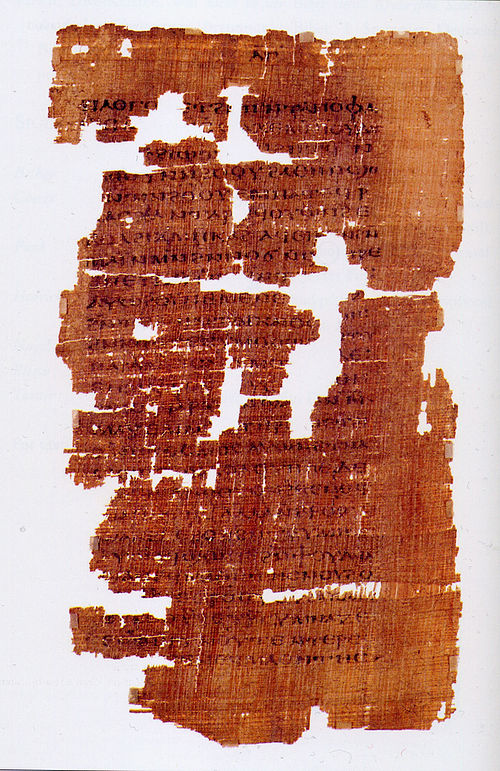
PD Image: The first page of the Gospel of Judas (Page 33 of Codex Tchacos)
PD Image: The first page of the ‘The Gospel of Judas’ at page 33 of Codex Tchacos, an ancient Egyptian Coptic papyrus containing early Christian Gnostic texts from approximately 300 AD.
The Gospel of Judas is purported to document conversations between Jesus Christ and Judas Iscariot. It is not written by Judas himself, but by the followers of Jesus in an early fourth-century Coptic text.
According to the New Testament (Matthew, Mark, Luke, and John), Judas identified Jesus to Jerusalem's Temple authorities, who handed Jesus over to Pontius Pilate, representative of the occupying Roman Empire, for crucifixion. But the Gospel of Judas interprets Judas's act not as betrayal, but rather as an act of obedience to the instructions of Jesus, as Jesus required a second agent to set in motion a course of events which he had planned, and that would end in his crucifixion.
According to the Gospel of Judas, Jesus told Judas, "You shall be cursed for generations", and then added, "You will come to rule over them" and "You will exceed all of them, for you will sacrifice the man that clothes me." Judas thus served Jesus Christ by helping to release Christ's soul from its mortal, physical constraints.
The Gospel of Judas does not claim that the other disciples knew Gnostic teachings, but it asserts that they had not learned the true Gospel, which Jesus taught only to Judas Iscariot, the sole follower belonging to the "holy generation" among the disciples.
According to Elaine Pagels, Bible translators have mistranslated the Greek word for "handing over" to "betrayal".
For centuries, many philosophers have contemplated that Judas was required to have carried out his actions in order for Jesus to have died on the cross and hence fulfill theological obligations. The Gospel of Judas, however, asserts clearly that Judas' action was in obedience to a direct command of Jesus himself.
In Martin Scorsese's 1988 American film ‘The Last Temptation of Christ’, adapted from the controversial 1960 novel of the same name by Nikos Kazantzakis, Judas Iscariot's only motivation in betraying Jesus to the Romans was to help him, as Jesus' closest friend, through doing what no other disciple could bring himself to do. It shows Judas obeying Jesus' covert request to help him fulfill his destiny to die on the cross, making Judas the catalyst for the event later interpreted as bringing about humanity's salvation. This view of Judas Iscariot is reflected in the recently discovered Gospel of Judas.
The Codex Tchacos, a leather-bound Coptic papyrus was discovered during the 1970s, near Beni Masah in Egypt. It was translated and appears to be a text from the late 2nd century AD describing the story of Jesus's death from the viewpoint of Judas. The conclusion of the text refers to the text as "the Gospel of Judas".
The manuscript was radiocarbon dated "between the third and fourth century", according to Timothy Jull, a carbon-dating expert at the University of Arizona's physics centre.
The manuscript is now in over a thousand pieces, due to poor handling and storage, with many sections missing. According to Rodolphe Kasser, the codex originally contained 31 pages, with writing on front and back. When it came to the market in 1999, only 13 pages, with writing on front and back, remained. It is speculated that individual pages had been removed and sold.
No comments:
Post a Comment